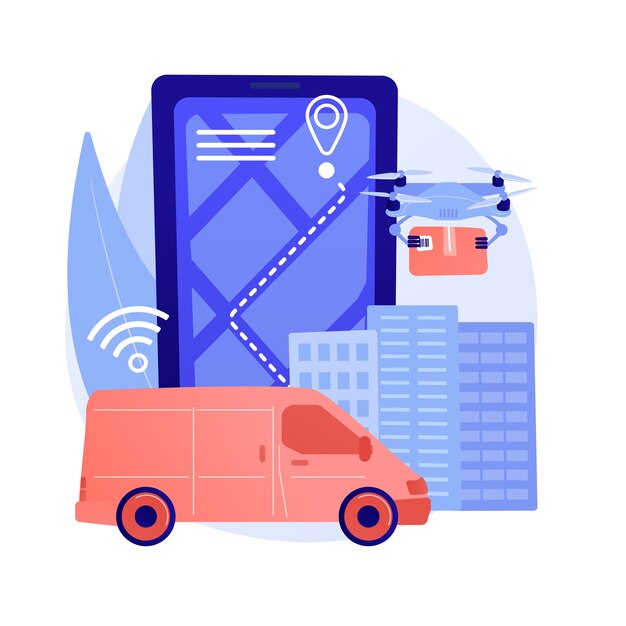Introduction
The transportation industry has seen tremendous change in recent years. The emergence of ride-sharing platforms, like Uber, Lyft, and Grab has transformed the way people commute, opening up new opportunities for both drivers and riders. But as these services continue to grow in popularity, a new trend has evolved – the demand for Uber clone apps.
Uber clone apps are essentially white-label solutions that enable entrepreneurs to build their own ride-sharing platforms, similar to Uber, with unique features and branding. The appeal of these clone apps lies in their cost-effectiveness, speed of development, and ability to tap into a proven business model. In this article, we’ll examine the growing demand for Uber clone apps and explore the factors behind their popularity.
1. Market Saturation and Regional Opportunities
Uber and other ride-sharing giants have already established their presence in many major cities worldwide. This saturation has made it challenging for new players to enter the market and compete directly with them. However, there are still numerous untapped markets, both in smaller cities and rural areas, where the demand for ride-sharing services remains unmet.
Uber clone apps provide an opportunity for entrepreneurs to fill this void. By customizing their apps to cater to the specific needs and preferences of these underserved regions, they can build a loyal customer base and establish a strong market presence. Furthermore, such services can contribute to improving transportation accessibility in these areas.
2. Niche Services and Targeted User Groups
One of the advantages of developing an Uber clone app is the ability to focus on niche markets and target specific user groups. The original Uber platform primarily caters to mainstream ride-sharing services. However, clone apps can be designed to offer specialized services, such as:
a. Medical Transportation: Providing on-demand transportation for individuals with medical needs, like non-emergency medical transport, wheelchair-accessible vehicles, and transportation to medical appointments.
b. Pet Transportation: Offering services that allow pet owners to travel with their furry companions safely and conveniently.
c. Luxury Transportation: Targeting high-end clientele with premium vehicles and exclusive features.
d. Delivery Services: Expanding beyond passengers to offer package and food delivery services, akin to UberEats.
3. Customization and Branding
Uber clone apps offer businesses the opportunity to establish their unique brand identity. From the app’s name, logo, and color scheme to the user interface and user experience, customization is nearly limitless. This allows entrepreneurs to create a brand that resonates with their target audience and sets them apart from the competition.
Moreover, they can implement features and functionalities that align with their business strategy. For example, a company focused on eco-friendly transportation can incorporate electric vehicle options and promote sustainable practices, differentiating themselves in a competitive market.
4. Speedy Development and Cost-Efficiency
Building a ride-sharing platform from scratch can be an expensive and time-consuming endeavor. Developing an Uber clone app, on the other hand, significantly reduces development time and costs. These clone apps come with pre-built core features, such as GPS tracking, user profiles, payment processing, and rating systems, allowing businesses to focus on customization and additional functionalities.
Furthermore, the clone app model often includes ongoing technical support and updates, reducing maintenance and development overhead, which is a major benefit for startups with limited resources.
5. Improved User Experience
As the competition in the ride-sharing industry intensifies, user experience becomes a crucial differentiator. Uber clone apps offer the advantage of learning from user feedback and evolving to meet customer expectations. This ensures that the app remains user-friendly and up-to-date, improving user satisfaction and retention.
In addition, businesses can take advantage of new technological advancements to enhance the user experience. For instance, integrating AI for personalized recommendations, or AR for more efficient navigation, can give clone apps a competitive edge.
6. Regulatory Compliance
Uber clone apps can benefit from the lessons learned by established platforms. They can navigate complex regulatory environments more efficiently, avoiding some of the legal challenges and controversies that have plagued industry pioneers. By studying the legal requirements and local regulations, clone app creators can ensure that their services operate within the boundaries of the law.
7. Data and Analytics
Data is a valuable asset in the transportation industry. Uber clone apps can harness the power of data analytics to enhance their services. By collecting and analyzing data on rider preferences, traffic patterns, peak hours, and driver performance, these apps can make data-driven decisions to improve efficiency and user satisfaction.
Furthermore, the data collected can be monetized through partnerships, advertising, and other revenue streams, offering additional income opportunities.
Conclusion
The demand for Taxi Dispatch Software and Uber clone apps is increasing, due to a number of factors including market saturation, the necessity for regional customization, and the affordability of white-label solutions. Entrepreneurs in the transportation industry are finding these clone apps to be a promising avenue for innovation and business growth.
While Uber and other ride-sharing giants have paved the way for the industry, the clone app model enables new competitors to enter with innovative concepts, niche services, and enhanced user experiences. By concentrating on personalization, branding, and regulatory compliance, these clone apps may promote themselves as the next big thing in transportation, capturing untapped markets and meeting the diverse needs of riders and drivers alike. The journey has just begun, and it will be fascinating to observe how this trend shapes the future of transportation.





